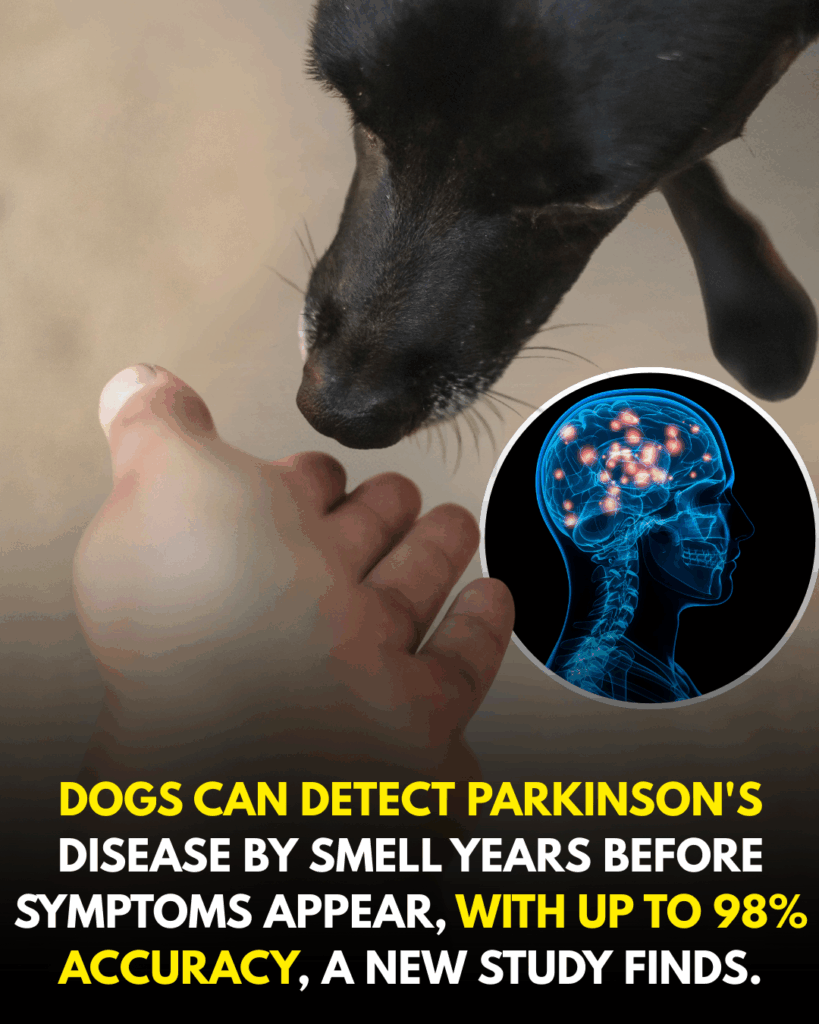Dogs possess an innate ability to detect diseases through their sense of smell. Throughout history humans have depended on dogs because of their remarkable olfactory abilities although scientists have only started to understand the full extent of their smelling abilities.
Trained dogs have proven their capacity to identify cancer and malaria and COVID-19 with high precision. Scientists have discovered that dogs possess the ability to detect Parkinson’s disease which causes progressive movement problems and life quality deterioration.
Medical professionals can now detect diseases at earlier stages because of this discovery which brings new diagnostic and treatment options to patients worldwide.
What Is Parkinson’s Disease?
Parkinson’s disease represents a progressive neurological condition which damages the nervous system to create difficulties with body movement control. The condition develops when nerve cells within the substantia nigra brain region fail to produce sufficient dopamine which enables smooth muscle movement.
The symptoms of Parkinson’s disease include tremors that affect hands and limbs as well as muscle stiffness and slow movements and difficulties with balance. The symptoms begin with small changes which grow into significant issues that block normal daily activities.
One of the biggest challenges with Parkinson’s disease is that there is no single test to diagnose it early.Medical professionals diagnose patients based on their symptoms and medical records which leads to delayed disease detection until the condition reaches an advanced stage. The detection of cancer in its initial stages becomes crucial because of this reason.
Why Smell Matters
The skin provides one of the most unexpected indicators which helps identify Parkinson’s disease. The human body produces sebum as a natural oil which serves to protect and hydrate the skin. Scientists have discovered that people with Parkinson’s often have changes in their sebum—both in how much is produced and in its chemical makeup.
The modifications produce an odor that humans cannot detect because it exists at a concentration level which is below human detection limits. The strong odor of marijuana becomes detectable to dogs through their exceptional olfactory abilities. Research indicates that dogs trained for this purpose can identify scent variations in Parkinson’s patient skin swabs during the beginning stages of the disease. Doctors will be able to detect Parkinson’s disease at an earlier stage through this technology which will provide patients with extended treatment and planning opportunities.
The Dog Superpower
Dogs have one of the most powerful senses of smell in the animal kingdom.Their sense of smell operates at such high sensitivity that they can detect smells which humans cannot perceive at 100,000 times greater sensitivity than human smell. Scientists have trained dogs to detect diseases including cancer and malaria and diabetes and COVID-19 for multiple years with remarkable precision.
Scientists started to investigate whether dogs possess the ability to detect Parkinson’s disease-related scent changes because of their proven track record in medical detection work. Research conducted in recent times indicates that the answer is affirmative. The trained dogs achieved accurate Parkinson’s disease detection through their analysis of sebum samples from people with and without the condition thus proving the exceptional power of their sense of smell.

Study: Dogs Can Smell Parkinson’s Disease (Explained Simply)
So how do we know dogs can really smell Parkinson’s disease?
Scientists decided to put it to the test. The team worked alongside two specific dogs which included a Golden Retriever named Daisy and a Labrador mix named Scamp. The dogs already knew scent work but this test presented a new challenge because they needed to detect Parkinson’s disease.
The researchers obtained skin swabs for their training purposes. These are just little cotton pads rubbed on a person’s skin to collect the natural oils (sebum).
The researchers obtained tissue samples from Parkinson’s disease patients and from individuals who did not have the disease.
Training the dogs took almost a year. The dogs received training to recognize Parkinson’s patient scents through olfactory detection and to perform a sitting action when they detected these specific scents. The children received rewards through treats and praise when they performed correctly which maintained their motivation and happiness.
The dogs reached their final stage of preparation before taking their “big test” which served as their final assessment of learning. The participants needed to identify unfamiliar scents which they had not encountered before.
Here’s what happened:
- Daisy (Golden Retriever): achieved correct responses in about 70% of the attempts.
- Scamp (Lab mix): did even better, correct about 80% of the time.
- Most importantly, both dogs were very good at saying when a person didn’t have Parkinson’s.The system failed to detect healthy samples during 90–98% of the time which resulted in minimal “false alarm” occurrences.
The obtained results show great promise. The research demonstrates that dogs possess the ability to detect Parkinson’s disease in people through their sense of smell. The devices have shown promise although they need further development to achieve their full potential. The devices operate as a detection system that humans and medical tests currently lack because they can identify the disease through scent detection.
The scientists believe this event represents the beginning of a new period. The development of more training programs and extensive research will enable dogs and their artificial smell-copiers to detect Parkinson’s disease at its early stages before symptoms appear. The system implementation would produce substantial benefits for patients together with their relatives.
Why Early Detection of Parkinson’s Matters
Early detection of Parkinson’s disease remains essential because it enables doctors to provide prompt treatment which controls symptoms and might reduce disease advancement. The current medical practice leads to brain cell loss diagnosis only after substantial damage has happened so early detection becomes crucial for improved treatment results.
Medical professionals will not be replaced by dogs but their scent detection skills for Parkinson’s disease could help create new non-invasive diagnostic techniques. Studies have shown that trained dogs can identify Parkinson’s from skin swabs with up to 80% sensitivity and 98% specificity, even distinguishing between healthy individuals and those with the disease.
The research shows that medical science can use dogs’ olfactory abilities to identify Parkinson’s disease during its initial stages through a novel diagnostic approach. Scientific progress and technological breakthroughs will create early-stage disease detection systems for dogs which will enable immediate medical interventions.
What’s Next
Scientists are currently studying if dogs possess the ability to identify Parkinson’s disease during its pre-symptomatic stage to enable doctors to initiate treatment at an earlier stage which would lead to better patient results.
The researchers work to convert canine scent detection capabilities into laboratory-based tests which provide non-invasive early disease detection methods for patients.
The research shows dogs can function as vital research partners for medical scientific studies.
DOI: 10.1177/1877718X251342485
PMID: 40659046

